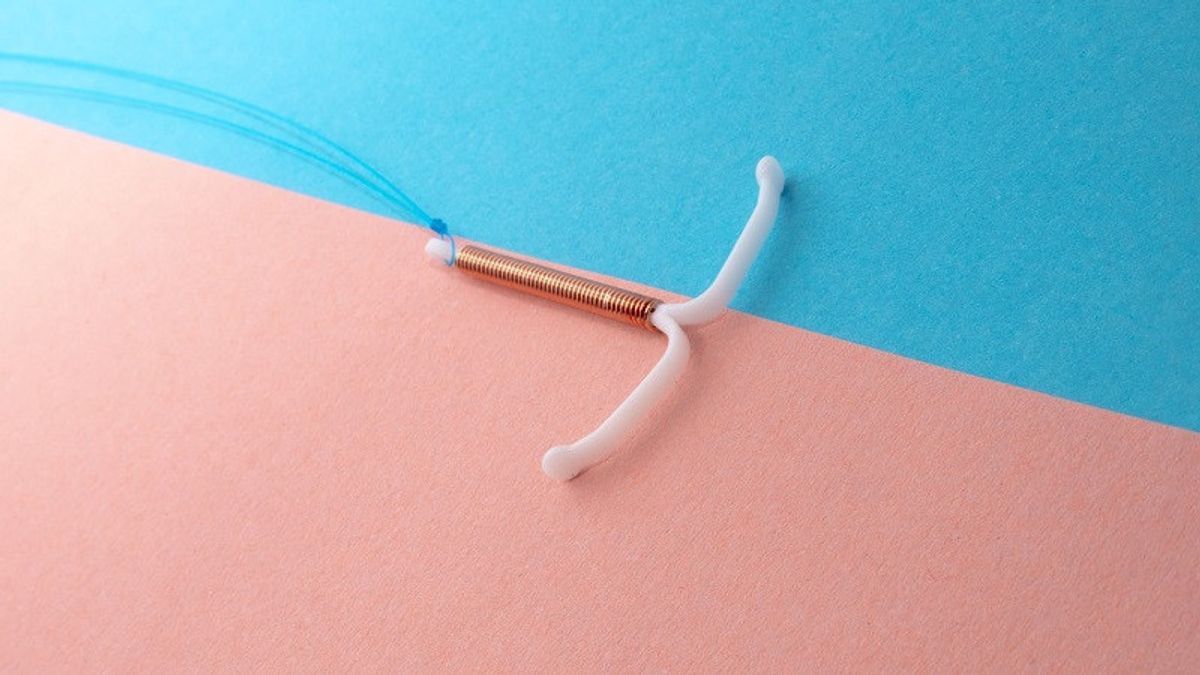YOGYAKARTA Side effects of KB IUD (Intrauterine Device/Contraceptive Tool In Rahim) are important to know before installing.
IUD or often called KB spiral is a contraceptive tool for women to prevent pregnancy.
IUD is made of plastic material and its shape resembles the letter T. The use of this contraceptive tool is installed directly into the uterus. The goal is to stop sperm from reaching the uterus and fertilize egg cells.
IUD is divided into two types, namely IUD with copper or non-hormonic layers, and IUD which has hormone content.
IUD is widely chosen as a means of contraception because it lasts a long time and 99 percent is effective in preventing pregnancy. In addition, IUD is also not a hassle and is safe to use for breastfeeding mothers.
Although it is classified as safe, some women have experienced side effects by KB IUD. Symptoms that arise can vary depending on the type or type of IUD used.
So, what are the side effects that have the potential to appear after the installation of KB IUD? Check out the full information below.
Quoted from AI-Care, the following are side effects of KB IUD that you need to know before installing:
1. Stomach Kram
The most common side effects of KB IUD are stomach cramps. This side effect can appear during installation or after.
Stomach Krams that appear can be light, but can also be heavy. In addition, the intensity of cramps can also decrease slowly, but it is possible to last longer.
2. Dizziness until fainting
Some women complain of dizziness after installing a spiral KB in the uterus. Some of them even fainted.
However, don't worry, because once you wake up and get back to your seat, then you'll feel better.
3.UNordered Haid
The use of KB IUD can also cause menstrual cycles to change. Generally, hormonal IUD makes menstruation lighter with shorter durations. In fact, it is not impossible that menstruation completely stops.
On the other hand, copper IUD can make menstruation heavier. In fact, there are also women who experience bleeding outside the cycle. Usually, the menstrual cycle will return to normal about 6 months after the installation of the IUD.
4. Kista ovaries
About 1 in 10 women will get an ovarian cyst in the first year after installing contraceptives in the uterus.
This cyst can usually disappear by itself within 3 months. Most ovarian cysts are harmless and do not cause any symptoms. However, some of them can cause bloating, swelling, and lower abdominal pain.
5. Ektopic pregnancy
Actually, KB IUD is an effective contraceptive tool to prevent pregnancy if the installation is correct. Even so, there is a study that states that the use of KB IUD can increase the risk of ectopic pregnancy.
Ektopic pregnancy is a pregnancy that occurs when the fertilization results are attached outside the uterus.
SEE ALSO:
6. Cuterine infection
Euterine infections include side effects of KB IUD which may appear after installation. This condition can occur when doctors install IUD in the uterus. The risk of infection can become higher if the IUD installation takes place in an unsirilized condition.
Therefore, make sure the installation of IUD is only carried out by an obstetrician, so that it can help reduce the risk of bacterial infection.
7. Expulsion
Expulsion is the fall of IUD from the uterus. This condition is characterized by bleeding and pain, but some do not experience any symptoms.
If you feel that IUD is detached from the uterus, don't try to install it or withdraw it. Go back to the doctor to see if IUD needs to be replaced with a new one or you need another type of contraceptive device.
That's information about the side effects of KB IUD. Hopefully this article can add insight to the loyal readers of VOI.ID.
The English, Chinese, Japanese, Arabic, and French versions are automatically generated by the AI. So there may still be inaccuracies in translating, please always see Indonesian as our main language. (system supported by DigitalSiber.id)

















